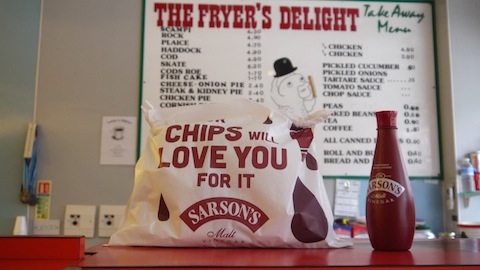There has been a recent trend for brand owners to focus on revitalising traditional British names and rekindle the consumers’ love for these favourites. Such activity couldn’t have come at a better time, with a recent Super Brands study showing that UK brands are also those that resonate most with the consumer.
With British Airways topping the list and being followed by immediately recognisable British brands, it is clear that home-grown products have a high level of pulling power. Indeed, you could say that in themselves these brands are ‘power brands’ — capable of standing on their own without massive amounts of support. However, what about those that do need a little extra nurturing? What can be done to these neglected products to turn them into bigger players?
To turn our home grown smaller British brands into ‘Super Brands’, marketers should focus on three principles — being nimble, keeping abreast of trends and focussing on getting the basics right. This can be better expressed through the 4P’s, of which Promotion and Product are the most visible to consumers and have biggest impact in shifting perception.
Marketers should start with examining what promotional mechanics they are using. Consumers need to rediscover their love of the brand so mechanics, such as experiential activities, help to ensure a high level of engagement amongst consumers that will go a long way to rekindling this love, especially if they can capitalise on the latest craze.
The product itself is also just as important and marketers must discover what’s liked and what’s not liked about their brand and relate this to today’s changing environment. For example, does the brand need a recipe refresh to keep abreast of nutritional guidelines and taste trends, or can new line extensions be initiated to bring modernity? Also, the people who are consuming your products must be reassessed. Are they the same consumer as you thought you had? Do you need to look for new audiences if you want your brand to become a bigger player? Your customers’ tastes and needs may have changed over time and this must be reflected in the products themselves if the brand wishes to grow.
This is where changes to current packaging formats come into their own. What a product is contained in should be viewed with fresh eyes: does the brand need a slight refresh or a complete relaunch? What innovation has taken place in packaging, format, lid construction and materials since you last looked at your brands emotional and functional uses, and can the brand benefit from changing? Marketers should constantly ask themselves if their packaging is fit for today’s tastes and if it connects with the emotional engagement consumers have for their brand.
Marketers must also look at how their brand is perceived internally within their own companies — do those who work on the brand act as ambassadors? Are they proud to work for the brand and do they talk it up? Word of mouth can play an important part in raising awareness and perceptions of neglected brands. Look beyond the physicality of your product in store and look at its equity within the office or factory environment. Look for opportunities to make your brand live at every touch point — meeting rooms named after your brand and decorated in brand colours, photos, past promotional materials displayed, internal event launches to celebrate activities, , signage in your reception area as suppliers or customers arrive at your location. Be proud of your brand and others will follow.
Looking closely at how we can maximise exposure to our target audience for our great British brands in the most cost effective way is something we really work hard at within Mizkan Europe. For example, with Sarson’s vinegar, customer communications previously focused on in store promotions. We wanted to look at things differently. By being nimble and focussing on an up and coming event,we launched a branded chip bag to coincide with Chip Week.

This grabbed consumers’ attention whilst also reminding them of their love for a quintessential British food. As this has not been at the front of mind for some time when visiting out of home points of purchase, we undertook this activity in local fish and chip shops! This ability to layer communication to consumers in a slightly different but cost effective way has been mirrored across Branston Pickle as well. A brand review resulted in new packaging with the archetypal ‘Bring out (the) Branston’ tag line spelled out over two jars. This approach was fresh and modern but also encouraged double purchase as consumers were keen to replicate the slogan at home.
By drilling down and reacquainting themselves with the basics — marketing 101 if you will — marketers can find the strategy they need. However, although professional expertise is key, the real success will come from a brand’s resonance with consumers. Appealing to their changing tastes and reigniting their love of a brand is the benchmark that continued achievement should be measured by. Inspiring this continued loyalty doesn’t have to be expensive or particularly complicated as shown by our Branston Pickle packaging change. All that marketers must bear in mind is that they have stewardship of their brands and that, with the right approach and a reserve of passion, any brand can be reinvigorated and empowered.
About the Author
As the Head of Marketing at Mizkan Europe, Lorna Kimberley is responsible for creating and leading marketing communications. Her main area of focus is delivering brand share growth and effective consumer engagement.
